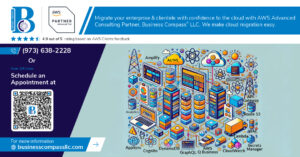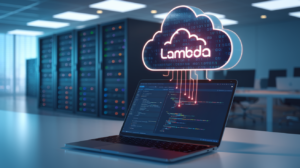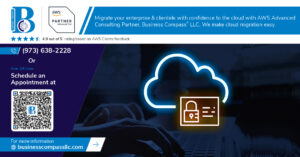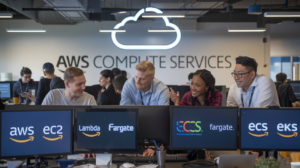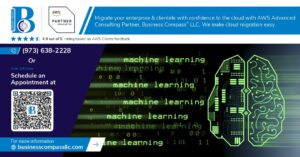Machine learning is changing how engineering teams build, deploy, and manage software systems. The shift from DevOps to MLOps represents more than just adding new tools—it’s a complete rethinking of how data-driven applications get delivered.
This guide is designed for engineering managers, DevOps practitioners, and ML engineers who need to understand how machine learning operations fit into their existing workflows. You’ll learn practical strategies for implementing MLOps without disrupting your current development processes.
We’ll explore how traditional DevOps principles create the foundation for successful MLOps implementation, focusing on the workflow changes that matter most. You’ll discover the key differences between DevOps vs MLOps approaches and why standard CI/CD pipelines need adaptation for machine learning models. We’ll also cover the essential MLOps components that can transform your engineering workflows, from automated model training to production monitoring systems that catch issues before they impact users.
Understanding the DevOps Foundation That Enables MLOps Success
Core DevOps principles that accelerate software delivery
DevOps revolutionizes software development through continuous integration, continuous delivery, and rapid feedback loops. Teams ship code faster by breaking down silos between development and operations, creating shared responsibility for application performance and reliability. Automated testing catches bugs early, while frequent releases reduce deployment risks and enable quick iteration based on user feedback.
Automation pipelines that reduce deployment friction
Modern DevOps relies on automated CI/CD pipelines that handle code compilation, testing, and deployment without manual intervention. These pipelines trigger automatically when developers push code changes, running comprehensive test suites and deploying successful builds to production environments. Pipeline automation eliminates human error, reduces deployment time from hours to minutes, and provides consistent deployment processes across all environments.
Collaborative culture between development and operations teams
Success in DevOps stems from cultural transformation where developers and operations professionals work as unified teams. Daily standups, shared metrics, and joint responsibility for system uptime create accountability across roles. Teams use common tools, share knowledge through documentation and mentoring, and celebrate collective wins while learning from failures together, building trust and improving communication.
Infrastructure as code practices that ensure consistency
Infrastructure as code treats server configurations, network settings, and cloud resources as versioned code stored in repositories. Teams define infrastructure using tools like Terraform or CloudFormation, enabling reproducible environments across development, staging, and production. This approach prevents configuration drift, speeds up environment provisioning, and allows teams to track infrastructure changes through standard code review processes.
Key Differences Between Traditional DevOps and MLOps Implementation
Data versioning challenges that traditional DevOps doesn’t address
Traditional DevOps handles code versioning with Git, but MLOps implementation faces complex data versioning challenges that require specialized tools. Machine learning workflows depend on massive datasets that change frequently, creating versioning nightmares traditional systems can’t solve. Unlike static code, training data evolves through preprocessing pipelines, feature engineering, and continuous data collection. Teams need to track data lineage, schema changes, and dataset splits while maintaining reproducibility across experiments. Tools like DVC and MLflow address these MLOps workflow requirements that standard Git repositories simply can’t handle.
Model performance monitoring beyond standard application metrics
DevOps vs MLOps becomes clear when examining monitoring requirements. Traditional applications track uptime, response times, and error rates, while machine learning operations demand sophisticated model performance tracking. ML models suffer from data drift, concept drift, and gradual performance degradation that standard monitoring misses entirely. MLOps implementation requires tracking prediction accuracy, feature importance changes, and input distribution shifts over time. Teams must monitor for bias, fairness metrics, and real-world performance gaps that emerge post-deployment. This level of monitoring complexity makes MLOps workflow fundamentally different from traditional DevOps practices.
Experimental tracking requirements for machine learning workflows
Machine learning engineering involves constant experimentation that traditional DevOps doesn’t accommodate. MLOps best practices require tracking hyperparameters, model architectures, training metrics, and experimental configurations across hundreds of iterations. Unlike software deployments with clear success criteria, ML experiments need comprehensive comparison frameworks to identify optimal models. Teams must log feature selections, cross-validation results, and A/B testing outcomes while maintaining experiment reproducibility. Modern engineering practices in MLOps demand tools like Weights & Biases or MLflow to manage this experimental complexity that overwhelms traditional CI/CD pipelines designed for deterministic software releases.
Essential MLOps Components That Transform Engineering Workflows
Automated model training pipelines that scale efficiently
Building robust automated training pipelines forms the backbone of successful MLOps implementation. These pipelines orchestrate data preprocessing, feature engineering, model training, and validation steps without manual intervention. Modern MLOps workflows leverage containerization and cloud-native services to automatically scale compute resources based on training demands. The pipelines integrate version control for both code and datasets, enabling reproducible experiments across different environments. Advanced implementations include hyperparameter optimization, automated model selection, and parallel training capabilities that dramatically reduce time-to-market for machine learning models.
Feature stores that centralize data access across teams
Feature stores revolutionize how organizations manage and share machine learning features across multiple teams and projects. These centralized repositories standardize feature definitions, ensuring consistency between training and serving environments while eliminating the notorious train-serve skew problem. Teams can discover, reuse, and collaborate on feature engineering efforts rather than duplicating work across different machine learning engineering initiatives. Real-time and batch serving capabilities enable both online predictions and offline training scenarios. The feature store maintains feature lineage, versioning, and quality metrics, providing data scientists with reliable, production-ready features for their MLOps workflow.
Model registry systems that manage deployment lifecycles
Model registries serve as the central hub for managing machine learning models throughout their entire lifecycle from development to retirement. These systems track model versions, metadata, performance metrics, and deployment history, creating a comprehensive audit trail for regulatory compliance and debugging purposes. Teams can compare model performance across different versions, manage staging and production deployments, and implement automated rollback mechanisms when models underperform. The registry integrates with CI/CD pipelines to automate model promotion workflows based on predefined performance thresholds and validation criteria, streamlining the transition from DevOps to MLOps practices.
Continuous integration for both code and data validation
MLOps extends traditional continuous integration beyond code to include comprehensive data and model validation. Automated testing pipelines validate data quality, schema consistency, and statistical properties before triggering model retraining. These systems detect data drift, feature distribution changes, and anomalies that could compromise model performance in production. Code validation includes unit tests for data processing functions, integration tests for end-to-end workflows, and model performance benchmarks. The CI/CD pipeline automatically triggers model redeployment when both code and data validation checks pass, ensuring reliable machine learning operations at scale.
Monitoring systems that detect model drift in production
Production monitoring systems continuously track model performance, data quality, and infrastructure health to maintain reliable machine learning services. These platforms detect concept drift, data drift, and performance degradation in real-time, triggering automated alerts and remediation workflows. Advanced monitoring includes feature importance tracking, prediction distribution analysis, and business metric correlation to identify when models need retraining or replacement. The systems integrate with existing DevOps monitoring tools while adding ML-specific capabilities like A/B testing frameworks, shadow model deployment, and automated model refresh policies that keep production systems performing optimally.
Overcoming Common MLOps Implementation Challenges
Data Governance Frameworks That Ensure Compliance and Quality
Establishing robust data governance frameworks becomes critical when transitioning from DevOps to MLOps implementation. Organizations need comprehensive policies that track data lineage, enforce quality standards, and maintain regulatory compliance across machine learning workflows. Key frameworks include automated data validation pipelines, version control for datasets, and audit trails that document every transformation. Companies must implement role-based access controls, data classification systems, and privacy-preserving techniques to meet industry regulations like GDPR and HIPAA while enabling ML innovation.
Cross-Functional Team Alignment Between Data Scientists and Engineers
Breaking down silos between data scientists and engineering teams requires structured collaboration approaches that bridge technical and domain expertise gaps. Successful MLOps implementation demands shared tooling, common deployment practices, and unified monitoring systems that both teams can understand and operate. Regular cross-training sessions, paired programming initiatives, and standardized communication protocols help create seamless handoffs from model development to production deployment. Organizations benefit from establishing clear ownership boundaries while fostering collaborative problem-solving approaches that leverage each team’s unique strengths.
Legacy System Integration Strategies for ML Workloads
Integrating machine learning operations with existing legacy infrastructure presents unique technical and organizational challenges that require careful planning and phased approaches. Modern MLOps workflows must accommodate older databases, monolithic applications, and established security protocols without disrupting critical business operations. Effective strategies include API-first architectures, containerized ML services, and hybrid cloud deployments that gradually modernize systems while maintaining backward compatibility. Organizations should prioritize incremental migrations, comprehensive testing frameworks, and rollback capabilities to minimize risks during the transition from traditional DevOps to MLOps practices.
Business Impact of Adopting MLOps in Modern Organizations
Faster time-to-market for machine learning solutions
MLOps implementation dramatically accelerates machine learning delivery cycles by automating model development, testing, and deployment processes. Organizations report reducing project timelines from months to weeks through streamlined MLOps workflows. Continuous integration pipelines automatically handle data validation, model training, and performance testing, eliminating manual bottlenecks that traditionally slow down ML projects. Teams can now iterate faster on model improvements and push updates to production systems without extensive manual intervention, giving companies a competitive edge in rapidly evolving markets.
Reduced operational costs through automated ML workflows
Automated ML workflows eliminate resource-intensive manual processes that consume significant engineering time and computational resources. Machine learning operations platforms optimize infrastructure usage by automatically scaling compute resources based on workload demands, reducing cloud costs by up to 40%. Teams spend less time on repetitive tasks like data preprocessing, model retraining, and deployment monitoring. The reduction in manual errors and system downtime translates to substantial cost savings, while automated resource management ensures organizations only pay for the compute power they actually need.
Improved model reliability and performance consistency
MLOps best practices establish robust monitoring and validation frameworks that maintain consistent model performance across different environments. Automated testing pipelines catch data drift, model degradation, and performance anomalies before they impact production systems. Version control for both data and models enables teams to track changes and quickly rollback problematic updates. Continuous monitoring dashboards provide real-time insights into model behavior, allowing proactive maintenance rather than reactive troubleshooting. This systematic approach results in more stable ML systems that deliver predictable business outcomes.
Enhanced scalability for enterprise-level ML deployments
Modern engineering practices enable organizations to scale machine learning operations from pilot projects to enterprise-wide deployments. MLOps platforms provide standardized frameworks for managing hundreds of models across multiple teams and business units. Container-based deployments and microservices architecture allow models to scale horizontally based on demand. Centralized model registries and shared infrastructure reduce duplication while maintaining governance standards. Organizations can now support diverse ML use cases simultaneously without creating operational silos or compromising on performance standards.
Machine learning is changing how engineering teams work, and MLOps is the bridge that makes it all possible. By building on solid DevOps practices, organizations can create workflows that handle the unique challenges of machine learning projects – from data management to model deployment and monitoring. The key differences between traditional DevOps and MLOps aren’t roadblocks, they’re opportunities to build more robust, data-driven systems.
The business impact speaks for itself. Companies that embrace MLOps see faster model deployment, better reliability, and teams that can actually collaborate effectively on complex ML projects. Yes, there are challenges to overcome, but the essential components we’ve discussed provide a clear roadmap. Start with your existing DevOps foundation, add the ML-specific tools and processes your team needs, and watch your engineering workflows transform. The shift from DevOps to MLOps isn’t just a technical upgrade – it’s your competitive advantage in an AI-driven world.











